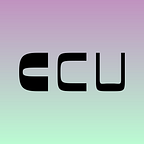‘Dialogue with Machines’
A recap of CCU’s ART MACHINES lecture evening featuring Joost Rekveld by Petra Biro.
On May 16 2019 at Sensor Lab, Creative Coding Utrecht presented the first part of the event series ART MACHINES. We started this trajectory of activities with a lecture evening which hosted three speakers, filmmaker and curator Martijn van Boven, Sanneke Huisman from LIMA and artist Joost Rekveld. The first two discussed the importance of re-enactment and ReCoding in the fields of media art preservation and education, while Joost Rekveld presented his art and examples that drive his research in the ‘dialogue with machines’.
Martijn van Boven addressed a field research assignment that his students received from EYE film institute. The students created a code re-enactment of De Tijd, a computer-generated abstract film by Bart Vegter. They tried to capture the concept of the software creating something new and to consider its visual aesthetics. They ran into obstacles while trying to work with the code due to its compatibility with current operating systems. Eventually they bought an old computer and uploaded the operating system Ubuntu. Partly due to their frustration with this process, the students recommended that artists write readable and well documented code. Martijn questioned the significance of documentation for artists. Why would an artist preserve every detail of the making of an artwork? The answer perhaps lies in the fact that it is simply useful to document the process of writing code. Similarly, using pseudocode is an important practice that ensures a two-way translation and it forces the creator to test his ideas, both as code and as visualization. A product of this student assignment was an interactive installation that was presented as part of an exhibition.
Our next speaker, Sanneke Huisman, emphasised the importance of historical awareness in media art and connecting historic media with contemporary practices. LIMA’s objective is to create awareness of historical media art works and their context. The first project she presented is currently available on LIMA’s website called Digital Canon, which presents the 20 most prominent artworks created in the Netherlands. She admitted that choosing these artworks was quite controversial, however it also stands for provocation and a platform for discussion. The second project highlights the act of ReCoding and how new works can interact with historical ones. Sanneke brought the example of Joost Rekveld after the work of Woody Vasulka. Vasulka’s work was made in the Czech Republic, manipulated by a scan processor and re-synchronized. What is the message of this artwork? The sounds recapture the experience of travel, while the visuals convey a sense of distance and memory. It expresses the memory of childhood with the manipulation of the sound and visuals. Joost developed his artwork by transferring similar imagery to the city of Amsterdam.
Joost gave a highly entertaining talk about his works and historical examples of technology that influenced his thinking and creative process. Questions around the ‘dialogues with machines’ drive his work, but instead of contemporary technologies, he is more invested in the history of media art. He believes that part of reflecting on the essence of one’s practice is about making own tools. It recurs in his practice and this is perhaps his way of trying to find answers. He has used various tools during the past years starting from analogue computers to kinetic objects and radar tubes. Broadly, his interests lie in material systems, control, and the traffic between signal world and material world.
His background in electronic music influenced his abstract films and led him to the question, how can we compose with the tools that we have? He viewed his films as a way of composing, reflecting on the balance between precision and leaving room for chance. This was present in his work that involved a kinetic light object and gave him insights about how to work with a chaotic system through control and precision. Motion also impacted his work with long exposure and questions regarding the history of motion capture. What were the reasons for cutting up time and motion to their most fundamental element? Joost found answers in the systematic control of the movement of factory workers for economic purposes in the 1920s and 1930s. He keeps researching the history of analogue technologies and tools that were so quickly forgotten and continues to create videos and films based on them.
[R]eflecting on the essence of one’s practice is about making [your] own tools
His interest in complexity stems from the investigation of tools that bring balance in a context of chaos. Inspired by the unpredictable way molecules find stability, he started to create a model on how crystals work. The development op this algorithmic system is the basis for the aesthetics of films such as #43 that was presented as part of Sonic Acts’ Vertical Cinema project. Using algorithms to create light patterns, he also creates pieces during dance performances. Joost is intrigued by the idea of the sciences as a way of controlling reality, since he believes that even mathematics is based on the unpredictability of things. Researching the relationship between humans and machines, he believes that behind the tools there is a deeper social logic, which points to control and efficiency. The idea of chaos and control persists throughout his work and they perhaps provide part of the answers to this complex inquiry.
How can we suggest that machines have something to say? During the evening, the audience got an insight into his tools and abstract films that reflect this leading question. During the ReCoding workshop that followed participants got to learn more about these questions through hands-on experience and creating prototypes inspired on Joost Rekveld’s film #3.
